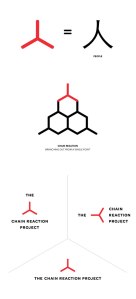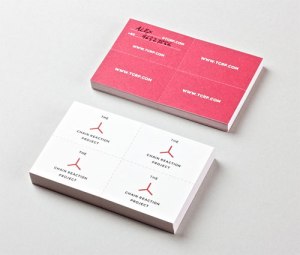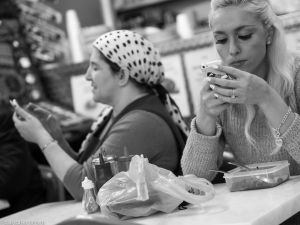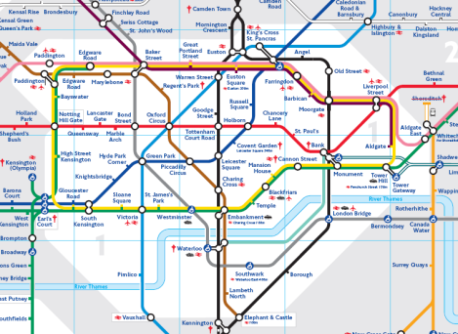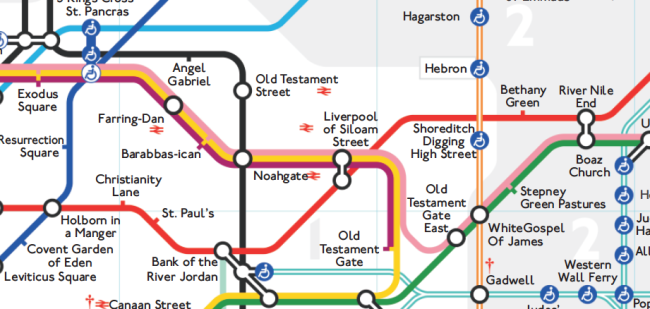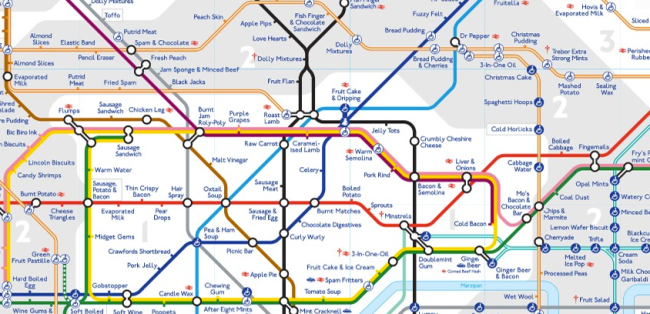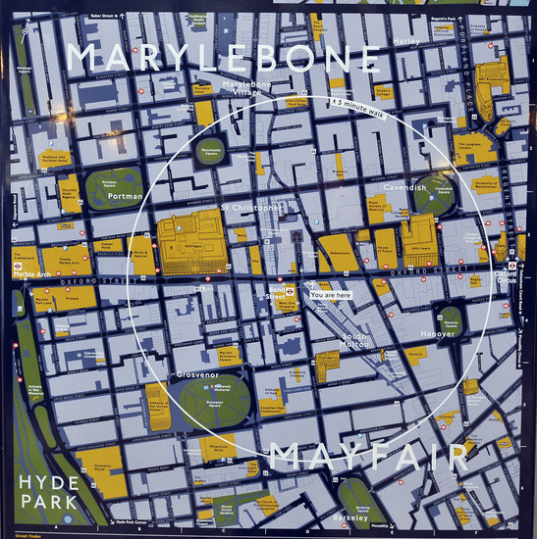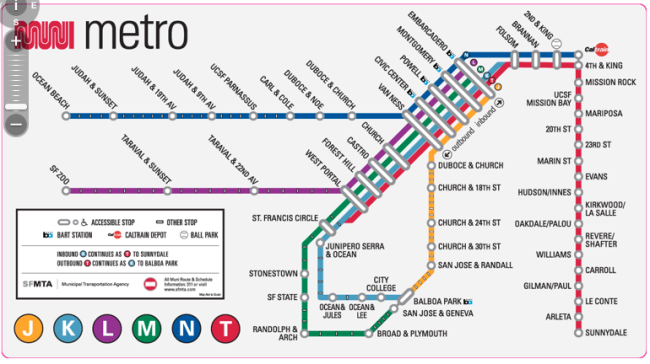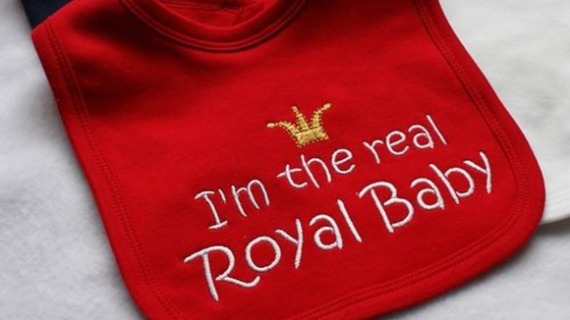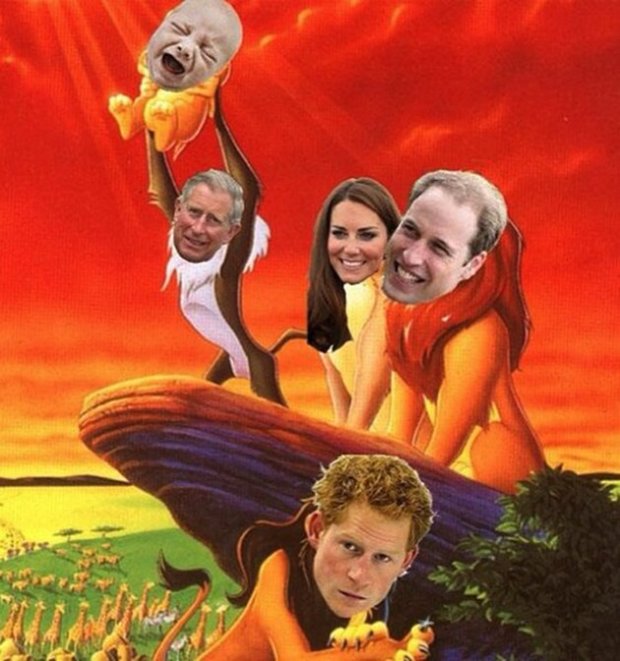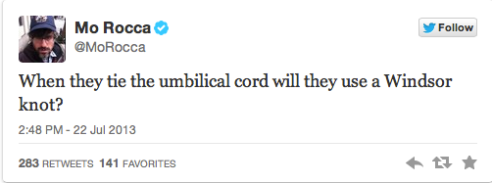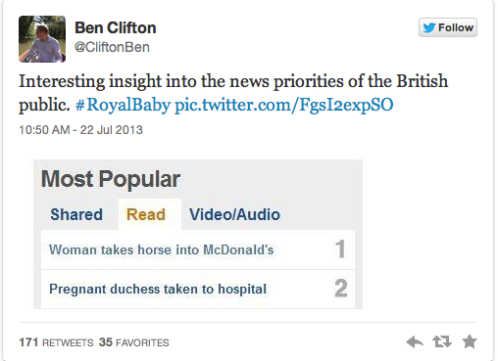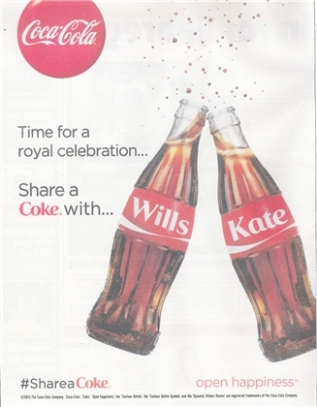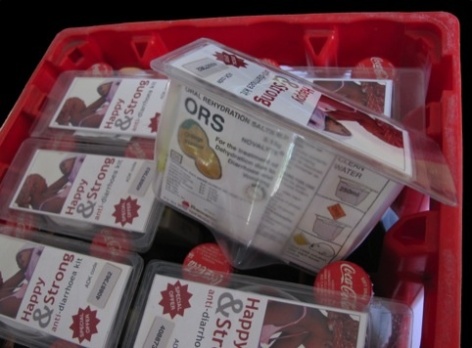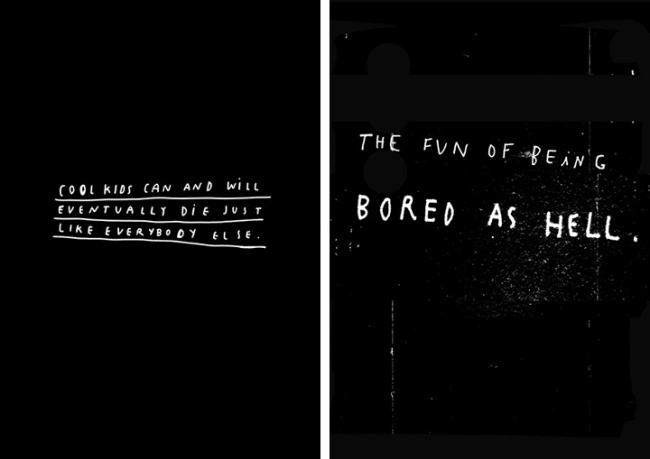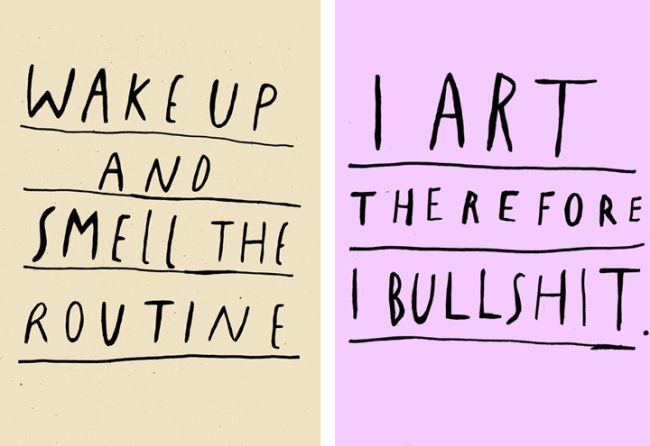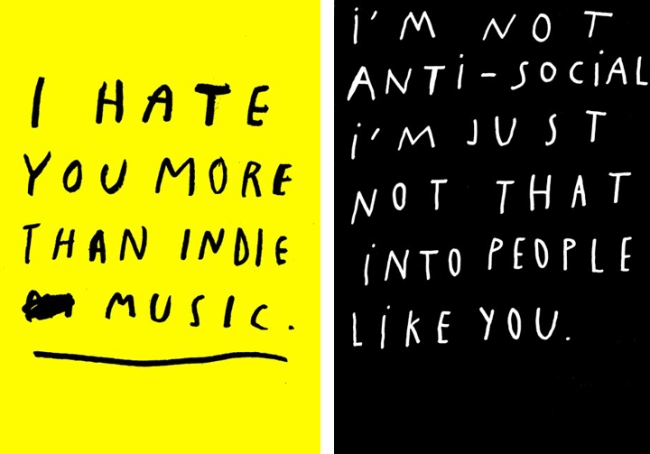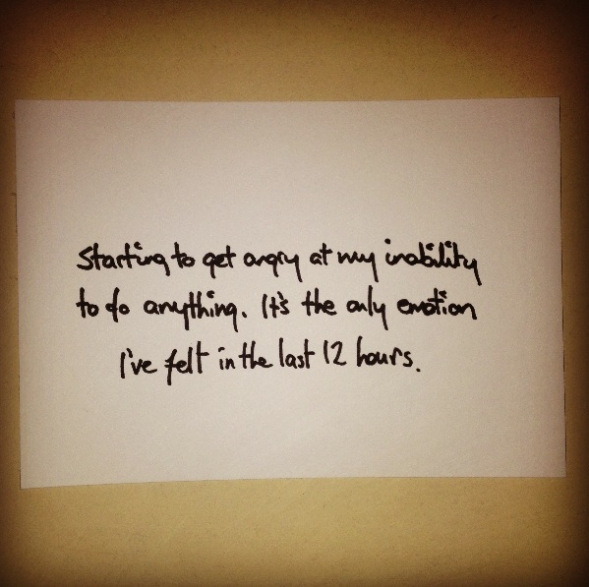I’ve been reading ‘Perfect Pitch’, by WPP’s Jon Steel, and it’s prompted me to think about what it really means to give a good presentation, something that, so far, I haven’t thought about in too much detail.

This book was recommended to me by Peter Dart, of WPP fame, and Dave Brown, worldwide VP of Consumer Branding for the Brand Union; I was interested by the idea of the book but didn’t know whether the information would be relevant to me at the stage of my education/career that I am at (second year Graphic Design student, looking for placements for a year in Industry next year). I used to think advertising was where I wanted to be, partly because it was the only area I knew a lot about while doing Graphic Design at A-Level; since coming to University I have realised that my strengths and my preferences lean towards branding and working to establish the identities that become household names. However I thought Jon Steel’s book would give me an interesting insight into presenting to clients, a process that I haven’t had much formal experience in.
Although the focus of ‘Perfect Pitch’ is presenting, I think there’s a lot that can be applicable to our working process as designers and that we can learn from. In particular, Steel describes the five steps that he believes are essential to planning a good pitch.
1. Grazing
This is the research stage of any project, whether for presentation or for work on a brief, the collation of ideas and the ‘gathering of raw materials’ which seems obvious but as Steel mentions and as I have observed myself, many people will attempt to find a solution from the work go.
When I started my degree, having done two years of Graphics AS/A-Level at school and then specialising at Foundation level, I was used to the idea that you never settle on the first idea that you have, it was habit rather than something I consciously thought about. When our first project was group-work and I was coupled with people who came up with an idea seemingly out of nowhere and were happy to settle on it, I was surprised that I had to explain that the first idea was never backed up by enough evidence to be a final solution.
Steel mentions what he refers to as ‘the Data Dump’; this is when presenters throw a lot of unprocessed information at their audience without refining it, he uses O.J. Simpson’s trial as an example. Marcia Clark and her team were working to prove Simpson’s guilt and, in doing so, presented a large amount of complicated, scientific information that proved that Simpson’s DNA had been found on a glove at the scene. The information that she gave them was relevant but not refined to the point where it wouldn’t bore or confuse the audience and this was one of her big mistakes. In his book ‘Presenting to Win’ Jerry Weissman states that a Data Dump is ‘vital to the success of any presentation. The secret is that the Data Dump must be part of your preparation, not the presentation’. Weissman makes an excellent point that you do not need to mention every snippet of research in your presentation, rather work towards finding key insights within these vast areas of research so as to keep it concise.
Every week, for one of my modules, we have a three hour feedback session. We are separated into groups of eight or so with a tutor and given the opportunity to present what we have found or done during the week. Although not a formal presentation it’s interesting to see those who have planned how they will explain their research and those who simply go through piles and piles of articles and books, detailing every sentence or image that’s of interest to their brief. These are the people who need to read ‘Perfect Pitch’. I think it’s important that, even in a casual scenario, your research is presented well so as not to bore the audience, after all they are the people you will be relying on for feedback!
2. Looking for meaning
This is the part where you gather together what you have so far and try to make connections within it, which may lead to further research, insights and eventually the solution. Steel puts emphasis on the practice of moving points around (his preferred method is to use post-it notes) and pair them with points with which there is not an obvious connection, this is the way that the most original connections can be made and unique insights formed.
A few months ago I was working on a brief which asked me to promote the general population to live more sustainably. Obviously sustainability is a huge subject area and I initially didn’t know where to begin or how to narrow down my research; when I eventually settled on the disposal of objects that have lost commercial value, I conducted an interview with Dr. Julian Allwood, author of ‘Sustainable Materials, With Both Eyes Open’ and he encouraged me to look for the co-benefits – those that didn’t necessarily relate to the stereotypical view – of recycling. This led to much more unique insights and solutions than going for the points that fit together at first glance.
3. Drop It
I’m glad this was a part of Steel’s list as it is the perfect excuse for procrastination. I’m sure I’m not the only designer who gets creative block and has to completely detach themselves from their work every now and again in order to find their direction again. Steel says that they key is not to forget the project but to ‘put the whole exasperating problem as far from your conscious mind as possible’ in order to let it simmer. Steel mentions those who keep a notepad by their bed (something I have tried and not enjoyed, bed is not a workplace) but I prefer a more active approach. Everyone has their own form of ‘creative procrastination’ and mine is exercise; however much a project is stressing you out, working it out gets you out of the house (or office), clears your head and gives you an often much needed endorphin boost. Sometimes you won’t even realise that you’re thinking about the project – once on a night out I came up with a really strange idea (completely unrelated to events of the evening) which ended up becoming the conceptual solution to a book cover (this can be seen at http://jenny-cook.co.uk/117397/1122970/gallery/folk-tales-for-the-ever-curious). So the ‘creative procrastination’ does work!
4. Adapt & Distill
Back to business, this stage does involve going back to your workstation and narrowing it down to more specific presentation points. It involves sharing your idea with those who haven’t worked on the project to see if it makes sense (there’s a major conflict of interests if you try to establish this yourself), as Steel says ‘it’s not what you say that counts, it’s what other people hear’.
The reason for this stage is that you need to be able to cut the project down if needs be, for example if time runs short and you need to get all your main points across in five minutes.
Steel uses his part in a presentation to Unilever, for Persil’s ‘Dirt is Good’ campaign, as an example; this follows creative writer Robert McKee’s description of a story as a ‘design in five parts’:
- Inciting incident – the power of the concept which is based on real-life truth and blurs the line between what is good and bad.
- Progressive Complications – this is the problem, that parents agree with the concept on an intellectual level but still see it as a hassle when their children come home dirty.
- Crisis – an even bigger problem, this involved encouraging parents to play with their children.
- Climax – a ‘catalyst for change’, encouraging the ‘crisis’ problem to be solved through the childrens’ conversation with their parents.
- Resolution – the confirmation that the idea works through effects seen elsewhere in the world.
With a presentation broken down like this, it was presented in forty minutes but could have been delivered in 5 with all the main points put across.
5. Writing the presentation
Up to this point in the chapter Steel has not mentioned the use of a computer, and he definitely has not mentioned his arch-nemesis – the power-point presentation. This is an interesting point as during our weekly feedback sessions, we are often asked to put together a power-point or multiple page PDF to illustrate the ideas we’ve had so far… whereas Steel says putting slides together too early is ‘putting the cart before the horse’ and that ‘what you say, and what they see and hear should not be the same’. Basically do not read from the slides, this is boring and unoriginal; slides should be there to illustrate not as a step-by-step guide.
Interestingly I have a lecturer who is very good at not reading from the slides, to the point where if you daydream for five minutes of the lecture you will have completely lost the point that he was making, so abstract are some of the images he uses to illustrate. This is, however, a clever way on his part of ensuring concentration (for those who want to pass the module anyway) for his whole presentation every week. He likes to point out that the slides are of very little use on their own without his dialogue, which is the point that Steel is trying to get across – slides are illustrations not the full story.
It’s interesting that we are not taught the specifics of how to present. At infant and primary school I was the girl whose report cards would state: ‘Jenny needs to put her hand up more’ or ‘Jenny is too quiet in lessons’, at some point in high school I outgrew this to take part in a public speaking competition, in which getting through the first round was a major achievement for me. On Foundation we were given the opportunity to present to our small group (of friends) but there were a few who would be missing on every ‘presentation day’. Now I feel that I could present a project adequately but not amazingly and, although at University we are told regularly that our presenting skills are not up to scratch, we are given little in the way of guidance. Steel’s book has highlighted a skill that I could definitely use some improvement on, but I do think Universities and higher education could provide more support for those for whom presenting will be key in their future careers!
Jon Steel has been in the advertising business since 1984, working as the agency’s youngest Brand Director for BMP and helped to make Goodby, Berlin & Silverstein, an agency in San Francisco, go from a fledgling agency to National Agency of the Year. He has worked for Sir Martin Sorrell at WPP and spent a year as vice-chairman of Berlin Cameron United in New York before returning to WPP in London.
Image source: http://jigsawresearch.com.au/blog/?p=1286



